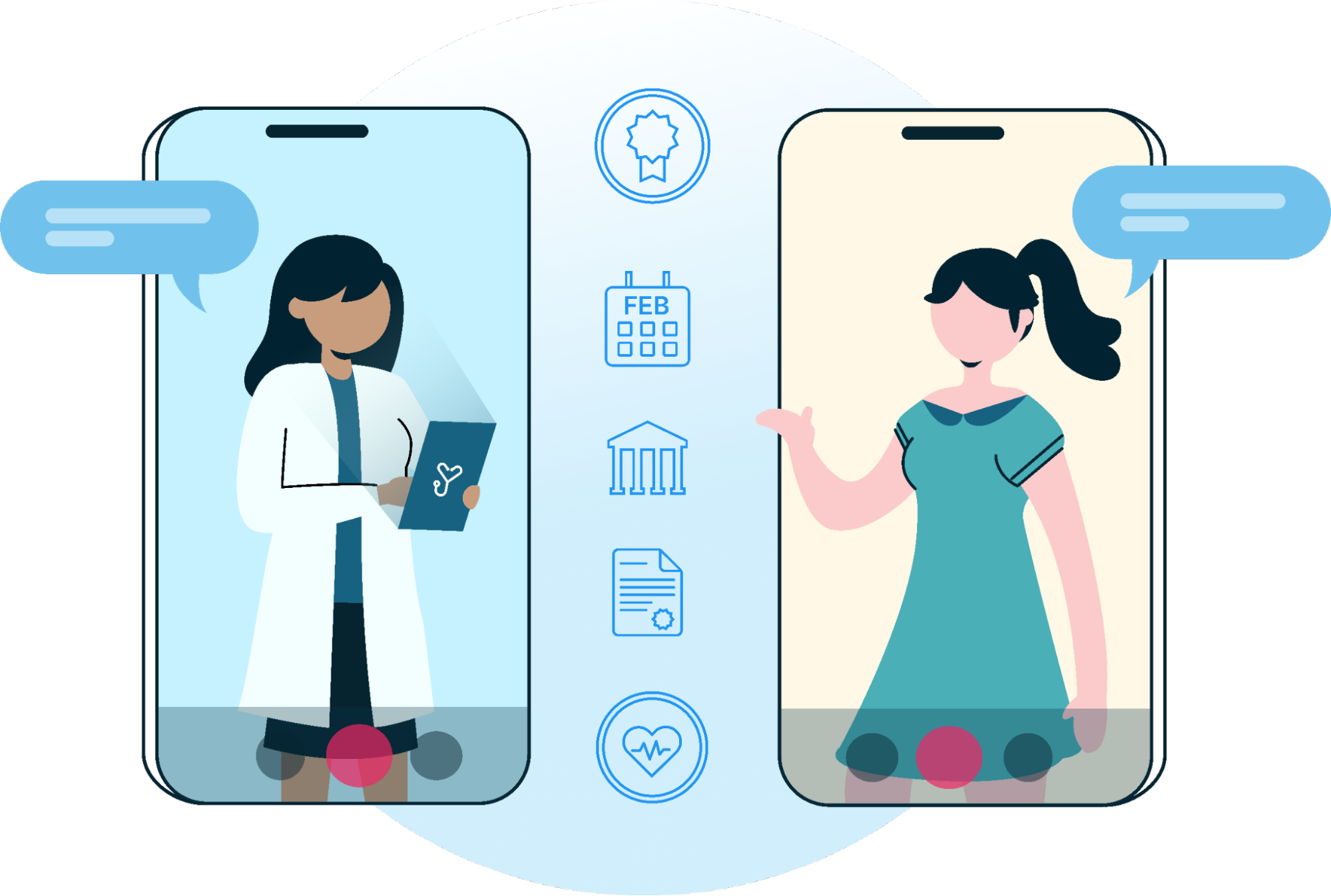The Top 5 Healthcare KPIs for Delivering Quality Care in 2023
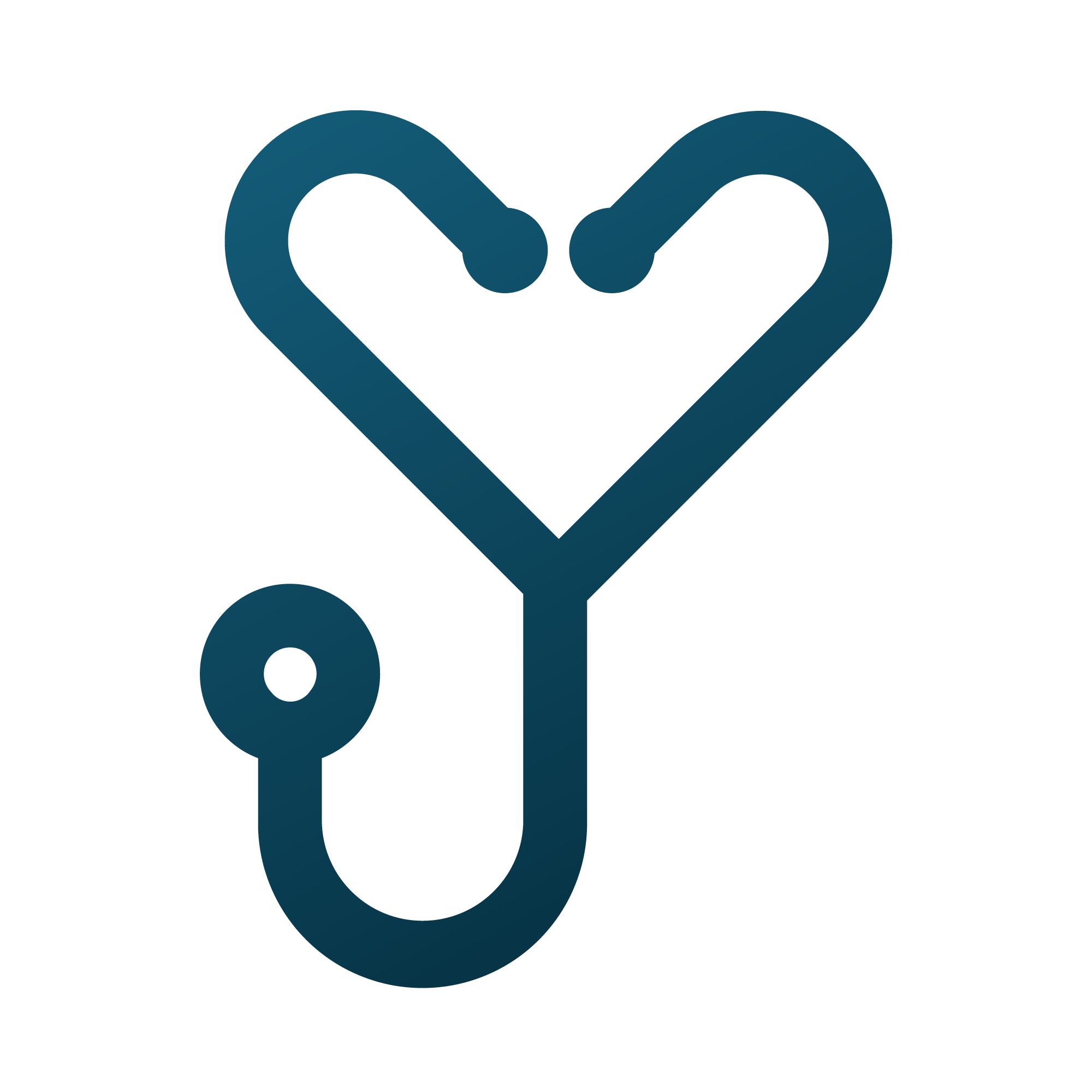
Is your healthcare organization tracking the right key performance indicators (KPIs) in order to deliver the best care in 2023? View the top 5 healthcare metrics here to find out.
Healthcare KPIs are necessary metrics to track the success of any healthcare practice. With the shift to virtual and hybrid care, you may be wondering which metrics you should be measuring in this new digital landscape. Learn more about what healthcare KPIs are and their importance, as well as the five most important metrics you should be tracking right now.
Jump ahead: Top 5 Healthcare KPIs for Delivering Quality Care
- What are Key Performance Indicators in Healthcare?
- Importance of Tracking Healthcare KPIs
- Top 5 Healthcare KPIs Your Practice Should Track
- Ways Telehealth Can Improve Healthcare KPIs
- Benefits of Tracking Healthcare KPIs with Telehealth Today
- FAQs Healthcare KPIs
- Start tracking your KPIs today
What are Key Performance Indicators in Healthcare?
Healthcare KPIs are metrics providers can use to gauge various aspects of healthcare delivery and performance. These metrics capture and translate vital information for the success of any practice.
Common healthcare KPIs include patient satisfaction, patient wait times, percentage of no-shows, and average time of payment processing. Yet the rise of virtual care as a result of the COVID-19 pandemic brings more healthcare metrics. These metrics relate specifically to telehealth encounters. These may include connection quality for virtual visits, digital intake form completion rates, and provider adoption. Alongside the more common KPIs, each of these can help track the success of a telehealth program.
[Related white paper: Key Performance Indicators for Successful Telehealth and Patient Engagement Programs]
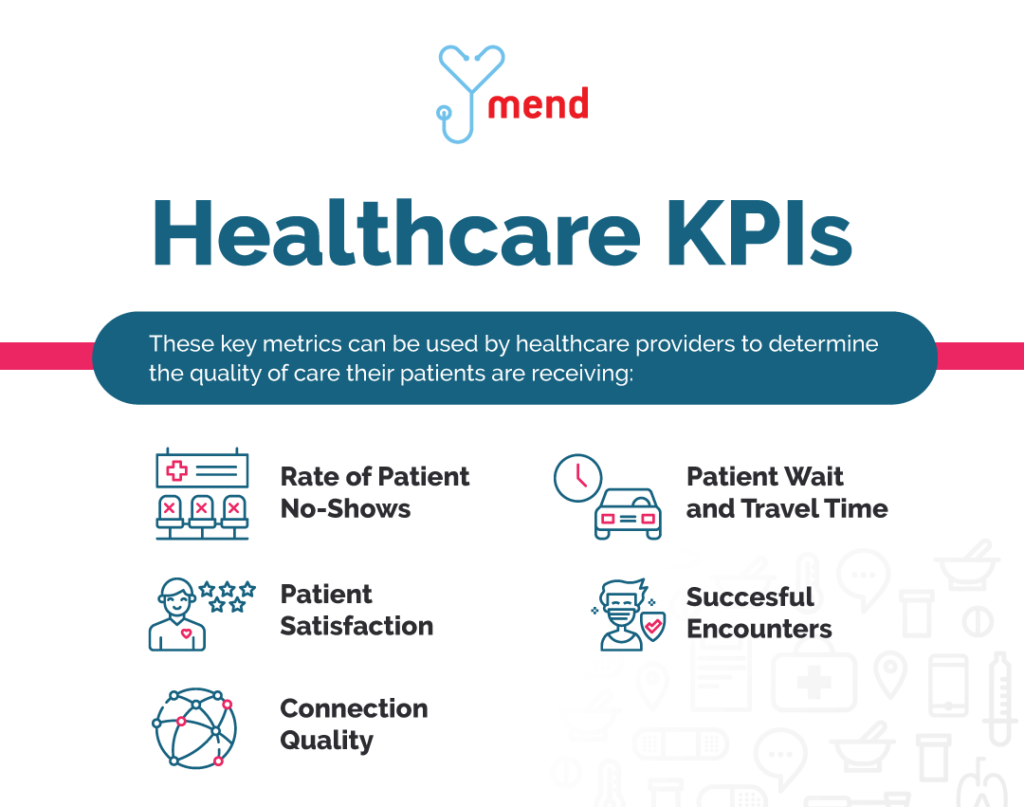
Importance of Tracking Healthcare KPIs
Delivering great care starts with understanding healthcare KPIs. With these metrics, providers can track progress and pinpoint areas for improvement in healthcare delivery. The metrics also help set standards for providing the best possible care for patients.
With the right platform, data can be analyzed at various touchpoints in the patient journey. For example, a provider may have high satisfaction rates with their patients. Yet the practice is still struggling with high no-show rates. Analyzing the check-in process could reveal sticking points that cause patients to drop off before their visits.
In addition to improving patient outcomes, tracking KPIs can help manage the costs and the growth of a practice. This data can allow practices to allocate staff and resources effectively.
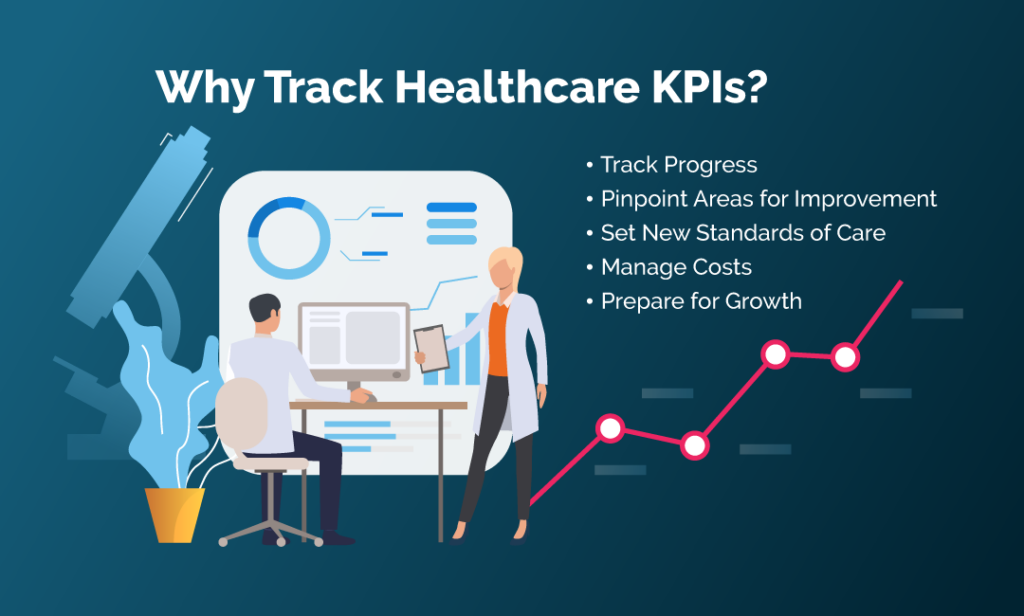
Top 5 Healthcare KPIs Your Practice Should Track
As the post-pandemic healthcare landscape shifts increasingly to telehealth and other forms of virtual care, these are five of the most essential KPIs to track.
1. Rate of Patient No-Shows
Each year, almost 30% of U.S. patients miss scheduled medical appointments. It’s no surprise that these no-shows have a major impact on patient health outcomes. No-shows also affect the efficiency of a healthcare practice.
When patients routinely miss their appointments, it makes it difficult for providers to deliver quality care. No-shows disrupt the continuity of care, which can lead to poor patient outcomes. In addition, it can lead to wasted time and resources for your practice as well as a loss of revenue.
Tracking no-shows can also help a practice identify the specific reasons that lead a patient to miss a visit. For example, there are common reasons a patient may miss their visit. These include insufficient appointment reminders, lack of transport, inability to get time off work, and childcare conflicts.
To counter these common reasons, there are a few steps your practice can take. Automated appointment reminders can help. These messages serve to remind patients of their upcoming visit and prompt them to take action.
By implementing a telehealth program, providers can make data-driven decisions. With this data, they can improve access to care for those with transport issues or scheduling conflicts. This can help drastically reduce no-show rates. The average no-show rate in 2022 for Mend telemedicine visits was 7.4%.
2. Patient Wait and Travel Times
Like providers, patients are busy. Measuring healthcare metrics relating to wait and travel times can reveal important insight into patient behavior and satisfaction.
A practice can calculate wait times as the average amount of time a patient must wait between checking in and seeing a provider. Long wait times can result in patient dissatisfaction and poor engagement. That’s why it’s essential to keep the wait time as low as possible.
Recent data shows that U.S. patients wait an average of 15 to 20 minutes from the scheduled appointment time until they see the provider. With telehealth programs like Mend, it’s possible to reduce wait times with automated digital processes. In 2022, Mend’s average wait time for a patient was 10:20 minutes.
Where wait times occur, it’s possible to optimize this time. Patients can benefit from an enhanced waiting room experience. This may include video content to engage with while they wait. This experience is two-fold. Educational content can improve overall health outcomes. Patients also report a higher level of satisfaction, another important KPI, when they have access to content.
Travel time is another healthcare KPI to consider. Patients may routinely miss appointments due to long travel times. Offering telehealth options can cut travel time and save time for patients. For patients who have a difficult time stepping away from work, off-peak telehealth hours can be a helpful option.
3. Patient Satisfaction
Patient satisfaction plays a crucial role in assessing the quality of healthcare. It has a marked impact on clinical outcomes, patient retention, and even medical malpractice claims.
As patients become more like consumers, they are demanding a better experience. Distilled to its most basic: if a patient doesn’t have a positive experience, they are less likely to return. This makes patient satisfaction one of the most important healthcare KPIs to monitor.
There are several ways to track patient satisfaction in healthcare, including patient surveys and interviews. Many telehealth platforms also offer tracking tools.
Examples of these some of these tracking tools may include:
- Patient portal use
- The number of patients who return for follow-up care
- Digital form completion rates
- The rate of successful encounters
- The number of complaints received
- The number of patients who leave against medical advice
4. Successful Encounters
Tracking successful encounters is a must when offering virtual visits. Having a high successful encounter rate helps ensure the delivery of quality care.
There are three areas in which a practice can measure if a visit was successful. These include:
Checkout and/or Billing
The right telehealth platform should be able to aggregate data. From there, the platform can determine if a visit was coded and then submitted for billing. If this occurs, there is a high chance of a successful encounter.
Time Patients and Providers are Connected within Visits
This metric can show if a provider connects for at least 2 minutes for a virtual visit. Or, it can show if the provider marks the visits as checked out. If either of these occurs, there is a high chance of a successful encounter.
Upload Speeds
Poor upload speed can affect the telehealth quality metrics of all virtual visits. The right telehealth platform should work together with your IT department. Together, the teams can identify any staff member whose workspace averages under 100 Kbps and make changes.
5. Connection Quality
If you can’t connect with your patient, you can’t deliver quality care. Every practice should be gathering healthcare metrics relating to connection quality. This includes data on both the provider and the patient side.
For providers and other team members, user and appointment average bitrate reports must also be available. These reports can be used for tracking and assessing ongoing connection quality. This is a key moment to pinpoint any problems before a visit. When problems are identified in a timely manner, a successful encounter is more likely to occur.
On the patient side, the right patient platform can pinpoint any patients who may have trouble connecting. Steps can be then taken to remedy this before the time of the visit. Any friction in this process could result in a missed visit, patient frustration, and even negative online reviews.
Ways Telehealth Can Improve Healthcare KPIs
The tracking and evaluation of healthcare KPIs is only part of the equation of delivering quality care. If your practice has found areas of improvement, it’s essential to take steps to improve your metrics. Here are just some ways that telehealth can help solve concerns with key metrics.
Reduce No-Shows
No-shows affect a practice in more ways than one. Patients don’t get the care they need resulting in poorer health outcomes, while providers bear a hard financial burden. The average no-show rate across the globe is 23%. For the average 10-provider practice, that’s an annual loss of $857,808.
Telemedicine can be a powerful tool to drastically reduce no-show rates. This helps reduce no-show rates to single digits for virtual encounters when implemented in a practice. The average no-show rate in 2022 for Mend telemedicine visits was 7.4%.
Other patient engagement capabilities can help reduce the rate of no-shows. For example, digital intake forms can be automatically sent for both in-person and virtual appointments. Patients can then complete these forms ahead of a virtual or in-person visit. The completion of a digital form suggests that a patient is engaged in their care. These patients are more likely to attend their upcoming visit.
Minimize Wait Times
A streamlined check-in process can minimize wait times. Mend offers the option to use pre-designed templates or create custom forms that match your workflow. These forms can be sent manually or automatically based on appointment types. This allows patients to complete the form before their appointment or contact the office with questions.
This technology reduces wait times before connecting with a provider. It allows patients to complete forms in a secure, HIPAA-compliant format ahead of their appointment.
Improve Patient Satisfaction
If your practice has low satisfaction rates, telehealth may help improve this metric. According to one report, only 30% of U.S. patients are very or fairly satisfied with overall healthcare. Meanwhile, telehealth reports show a different experience.
The National Library of Medicine shows 82.7% of patients are satisfied with telehealth. With Mend telehealth, customers average even higher patient satisfaction rates at 96% in 2022.
Telehealth can improve patient satisfaction in many ways. Offering telehealth visits outside of standard hours can be helpful. This is especially true for patients who have a hard time taking time off work or finding childcare. Streamlined digital check-in processes, as well as simple payment processing, can also help to improve the patient experience.
Mend is also the only telehealth platform to offer a robust, enhanced waiting room experience. Designed with a Netflix-like interface, patients can choose video content to engage with while they wait. This may include videos or custom content about a provider or organization. Results have shown a 23% increase in patient satisfaction after enabling Mend’s Enhanced Virtual Waiting Room experience.
Improve Encounters
Having full transparency to data regarding successful encounters can help your practice be more effective. That’s why Mend records and shares data on all video session participants with customers.
Staff can also access this data in real time during a video visit. This includes information on audio and video bitrate, packet loss and any errors that occur during a session. Teams can use this data to troubleshoot and fix issues with the help of Mend technical support.
Ensure High Connection Quality
A frictionless connection process is necessary for delivering quality patient care. Any problems with connecting can cause patient dissatisfaction.
Mend can help establish procedures for addressing connectivity issues with patients before scheduled appointments. In situations where connectivity is an issue, telehealth kiosks can be provided. Mend also works on 3G networks, with backup audio calls as an option.
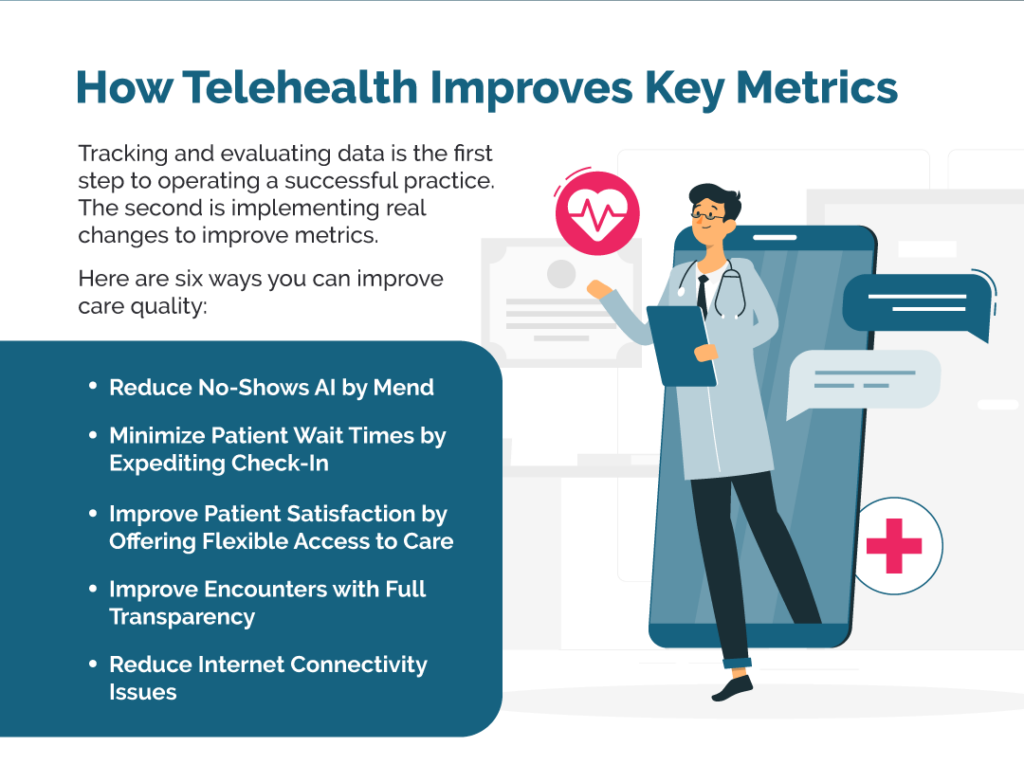
Benefits of Tracking Healthcare KPIs with Telehealth Today
Tracking key performance indicators in healthcare can help providers measure and improve their performance in several ways. Some of the benefits include:
- Pinpoint areas for improvement: Through monitoring healthcare KPIs, providers can pinpoint areas where they are lacking. This can create a clear path for offering better care.
- Benchmark performance: Providers can use KPIs to compare their performance to industry standards. This helps providers create a benchmark for their performance and recognize any areas that require improvement.
- Enhance patient outcomes: Providers can recognize patterns and trends that can be used to improve patient care.
- Increase efficiency: By tracking KPIs, providers can detect inefficiencies and take action to improve these. This will also help decrease costs.
- Improve the quality of care: Healthcare teams can pinpoint areas where the quality of care needs to be improved. Teams can then take action to improve the quality of care for patients.
- Improve delivery of care: By analyzing KPIs, healthcare team members can improve communication and coordination among care teams. This can lead to better patient outcomes.

Start Tracking Your KPIs today
Clinical expertise is only one element of delivering quality care. Providers and care teams need the right tools in place to track and evaluate healthcare KPIs. This is necessary for ensuring the success of any practice. These metrics allow you to gauge everything from wait times and patient satisfaction to connectivity, successful encounters, and more. With this information readily available, you can leverage the data to benefit your patients and practice.
At Mend, we’ve helped providers deliver quality care to over 5,500,000 patients. We work closely with our clients to monitor healthcare KPIs to ensure the success and effectiveness of our program. To explore everything Mend has to offer, schedule a demo today with our experts to learn more.
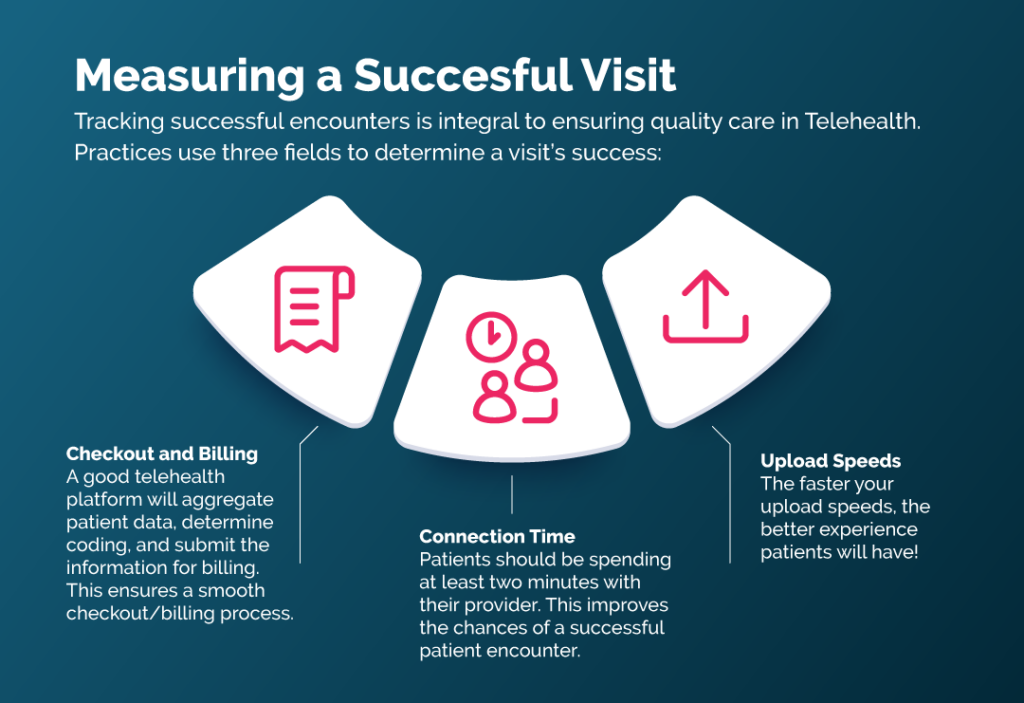
FAQs
What does KPI mean in healthcare?
In the healthcare industry, a key performance indicator (KPI) is a metric used to assess the performance of a certain aspect of care. Providers can use KPIs to gauge various elements of the patient experience — before, during, and after a visit. Common KPIs include patient satisfaction, patient wait times, percentage of no-shows, and the connection quality of telehealth.
How are KPIs used in healthcare?
These metrics are used to gauge the quality of care, efficiency, and cost-effectiveness of healthcare services. As more encounters happen virtually, a wealth of data is available to providers and care teams. These metrics can help providers improve the patient experience and overall health outcomes.
Why are KPIs important in healthcare?
The tracking and monitoring of KPIs benefits patients and providers alike. By optimizing the various touchpoints of the patient experience, care teams can provide better care to their patients and improve overall outcomes. Providers can use these metrics to identify areas where they can reduce costs and improve efficiency.
How can you measure KPIs in healthcare?
A practice can measure and track KPIs with a telehealth platform or patient engagement program. The right solution can integrate with existing electronic medical record software. This will allow it to collect patient data and analyze primary key performance areas. A successful platform should be able to collect various KPIs regardless if a visit happens in person or virtually.
Keyword:
Find a Topic:
Recent Posts
- Compassionate Foundations: Self-Care for Mental Health Providers
- Behavioral Health News: Mend Partners with Leading Community Mental Health Organizations to Reduce No-Shows and Increase Access to Care
- Understanding SAMHSA’s Key Changes to 42 CFR Part 8: A Guide for Healthcare Professionals
- Becoming a CCBHC: Staffing Requirements
- Empowering Change: SAMHSA’s Impact on Behavioral Health Through Grant Funding, Innovation, and Collaboration
